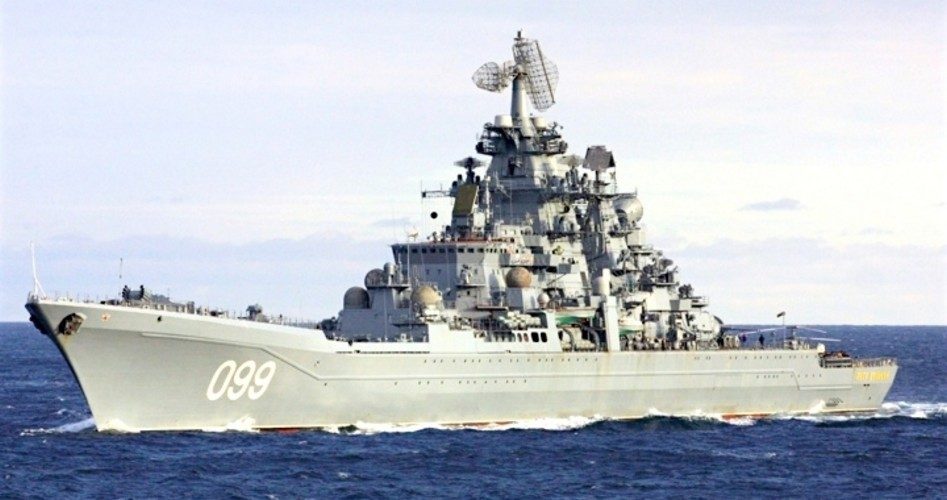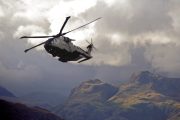
On August 22, 2012, Russia is anticipated to officially join the World Trade Organization, which will lower trade barriers on Russian imports. This will have no affect on U.S.–Russian trade policy unless Congress terminates its Cold War-era restrictions against trade with the USSR, and this is precisely what is transpiring. Both the Democratic-led Senate Finance Committee and the Republican-led House Ways and Means Committee approved legislation to repeal the Jackson-Vanik Act of 1974 that denied the Soviet Union permanent normal trade relations status.
The bill passed by the House Ways and Means Committee was H.R. 6156, the Russia and Moldova Jackson-Vanik Repeal Act of 2012. Eager to sell the very rope with which the communists will hang the capitalists, U.S. business leaders are selling H.R. 6156 as an attempt to create American jobs and strengthen the economy. “If Congress fails to act this summer, it will have missed an immediate opportunity to support the U.S. economy and American jobs,” said Doug Oberhelam, chairman of the Business Roundtable’s international engagement committee and the chairman of Caterpillar Inc., according to the Associated Press.
Although the repeal measures have passed both committees they have yet to reach the floor of either chamber, and it remains to be seen whether they will receive a vote before Congress convenes for the summer in August. Voters can expect the Obama Administration and reelection campaign to make an issue in support of repealing the 1974 Jackson-Vanik Act under the guise of supporting “the U.S. economy and American jobs,” as Oberhelam advocated. Repealing the 1974 Jackson-Vanik Act would be consistent with President Obama’s “reset” policy and second term “flexibility” with Russia.
Passage of this measure is expected to double U.S.-Russian exports in five years. According to the AP, “The United States currently exports about $9 billion worth of goods to Russia a year.”
Ominously, the day after the House Ways and Means Committee voted in favor of repealing the Jackson-Vanik Act, Russia’s navy chief announced plans to establish naval bases abroad.
Russian Navy
On July 27, 2012, in an interview with RIA Novosti state media, Vice Admiral Viktor Chirkov said, “It’s true that we are continuing work on providing the navy with basing outside the Russian Federation.” Vice Admiral Chirkov elaborated, “We aim to set up resupply bases in Cuba, the Seychelles, and Vietnam.”
A Soviet naval base had been established in Cam Ranh Bay, Vietnam, but was closed down in 2002. In an interview broadcast by Voice of Russia radio, Vietnamese President Truong Tan Sang said he would renew permission for Russia to use the naval facility, in the interest of furthering a “strategic partnership” with Moscow and that Vietnam would “provide Russia with advantages in Cam Ranh, including with aim of developing military cooperation.”
Russia officially ended its military cooperation with the Castro brothers’ regime in 2002, when the Kremlin closed down its espionage facility in Lourdes, Cuba. The re-establishment of a military presence in these countries marks the first occurrences of Russia opening naval bases abroad since the alleged collapse of communism during the breakup of the USSR.
These bases could become operational by the time Russia unveils its new generation of aircraft carriers. In 2011, Russia’s state-run shipbuilding company announced that Russia’s new aircraft carriers are expected to be blueprinted by 2017 and launched in 2023. By 2027, Russia is expected to have two carrier battle groups, in the Pacific and Northern fleets.
“An appearance of a large aircraft carrier group in a [conflict zone] … would distract a potential enemy’s attention from the Russian territory. In addition, any aircraft carrier would help expand the Russian fighter jets’ range,” a representative of the Russian Navy Main Headquarters was quoted as saying in the Russian daily newspaper Izvestia, in 2011.
These new Russian carriers are suggested to be “nuclear-powered, with a displacement of 80,000 tons,” according to RT (Russia Today). The largest Soviet carriers had a maximum displacement of 50,000 tons. If completed, these new Russian carriers would be the first built since the USSR fell. Russia’s only active carrier, the Admiral Kuznetsov, was launched in 1985.
In addition to carrier production, the Russian Navy has embarked on a shipbuilding program for expanding the number of its surface combat ships and submarines. In November 2011, the Russian Ministry of Defense placed orders for four Project 955A Borei class nuclear-powered ballistic missile submarines, equipped with 20 silos capable of launching nuclear-tipped SLBMs (submarine launched ballistic missiles). The Defense Ministry also placed orders for five Project 885M Yasen class nuclear multipurpose attack submarines, equipped with 10 torpedoes tubes.
While new ships are being added to the Russian fleet, old ones will be called out of mothballs and re-entered into service. In 2010, the Defense Ministry announced that it would refit and overhaul (modernize) its Kirov class nuclear-powered missile cruisers.
Since the U.S. Navy decommissioned its last active duty battleship, the USS Missouri (BB-63), on March 31, 1992, the Soviet-built Kirov class missile cruisers have been the world’s largest surface combat ships in active duty. They are equivalent in size to the battlecruisers operated by the British Royal Navy from World War I through World War II.
The Defense Ministry has also made plans to modernize its Project 949A Oscar II class cruise-missile submarines. According to Defense Review Asia, “these commitments combined amount to US $10 billion.”
Back in 2008, a flotilla of four Russian warships, led by the Kirov class missile cruiser Peter the Great (pictured above), embarked to Venezuela to conduct joint maneuvers with the Venezuelan Navy. This voyage also marked the first time since the Soviet Union collapsed that Russian warships went to South America.
Venezuela, like many of the Soviet Union’s Cold War allies and satellites, is ruled by a communist regime. In 2007, Venezuelan President Hugo Chavez replaced his government’s ruling coalition, the Fifth Republic Movement, with the newly formed United Socialist Party of Venezuela. In his third presidential inauguration speech addressed that year, Chavez explained, “Those of you who want to know what type of socialism I have planned for Venezuela should read Marx and Lenin.”
A Russian naval facility in Cuba would likely allow for further joint Russian naval maneuvers with the navies of Communist Cuba and Venezuela. Both the 2008 joint naval exercises with the Venezuelan Navy and Russia’s intention to set up naval bases in communist states, such as Cuba and Vietnam, remain consistent with Soviet Cold War foreign policy objectives.
“No one should have any doubts, comrades, that the CPSU will consistently continue promoting cooperation between the USSR and the newly-free countries, and consolidating the alliance of world socialism and the national liberation,” said Soviet leader Leonid Brezhnev in his “Report of the Central Committee of the CPSU,” delivered on February 23, 1981.
Vice Admiral Chirkov’s announcement comes just after the escalation of internal tensions with Soviet/Russian long-time ally Syria, which place at risk the Tartous naval base. The naval base in the port city of Tartous, Syria, is Russia’s sole naval base outside of its former Soviet borders. On July 26, 2012, Britain’s Daily Telegraph reported that “Syrian rebels have threatened to attack Russia’s naval base at the port of Tartous if Moscow continues to supply weapons to President Bashar al-Assad’s regime.”
Louay al-Mokdad, a logistical coordinator for the Free Syrian Army (FSA), declared, “We have a warning for the Russian forces: if they will send any more weapons that kill our families and the Syrian people we will hit them hard inside Syria.”
Al-Mokdad revealed information about incoming Russian arms to Syria. “Informers inside the regime are telling us that there is a big weapons shipment arriving at Tartous in the next two weeks. We don’t want to attack the port, we are not terrorists, but if they keep acting like this we will have no choice.”
An FSA representative told the Telegraph that they could easily destroy the Tartous naval port or directly attack the Russian ships carrying the arms shipments. “We can easily destroy the port. If we hit the weapons stores with anti-tank missiles or another weapon it would trigger a devastating explosion, or we can attack the ships directly.” Captain Walid, a former officer in the Syrian Navy now turned FSA rebel, stated, “We are watching very closely the movements of the Russians.”
Soviet-Syrian Solidarity
The Russian government has had an invested interest and alliance with Syria since the days of the Soviet Union. Since 1963, Syria has been under the control of the Arab Socialist Baath Party, currently led by President Bashar al-Assad. The Baath Party was originally founded by Arab national socialists (Nazis) who admired Adolf Hitler and desired the creation of a untied pan-Arab state. Although the USSR may have preferred a Marxist-Leninist, or international socialist, regime, a national socialist one was not far removed in its shared anti-capitalist and anti-Israel ideology. In fact, in the Syrian parliament, the Baath Party leads a “progressive” coalition, which includes two factions of the Syrian Communist Party.
Bashar al-Assad has been the undisputed president of Syria since the death of his father, Hafez al-Assad, in 2000. Hafez al-Assad first came to power in 1971 and was a strong ally of the Soviet Union and personal friend of Soviet premiers Leonid Brezhnev and Mikhail Gorbachev.
On April 24, 1987, President Hafez Assad and a Syrian delegation, composed of Baathists and a Communist, visited the Soviet Union, where they met with Soviet Defense Minister Sokolov and Gorbachev. Assad told Gorbachev, “Today, Israel is capable of defeating Syria within a few hours. But we are hardly able to strike a similar blow on Israel.” Assad continued pointing toward Israel’s military superiority. “The Israeli army is equipped with ground-to-ground missiles of greater range and higher precision, as well as radio-electronic means to suppress Syrian air defenses. Syria does not have such weapons,” Assad said.
He requested the same weapons from the Soviet Union. Gorbachev did not grant nor deny Assad’s request for such weapons. Instead, Gorbachev replied by reminding him that Israel would not be opposed by Syria alone but by the combined military forces of the Arab world, which greatly outnumber Israel.
According to Pavel Stroilov, a Russian defector and author of the book Behind The Desert Storm, the “Syrian Politburo passed solemn resolutions on ‘unlimited expansion of cooperation with the USSR in all fields.’” Stroilov further revealed, “Assad proudly reported to Gorbachev that, at any official event in Syria, the audience was obliged to burst in applause whenever a speaker mentioned the Soviet Union.” In classified Kremlin documents stolen from the Gorbachev Foundation, by Stroilov, Assad is on record telling Gorbachev, “Syria has always pursued policies which are absolutely identical to those of the Soviet Union.”
Despite not always getting every desired weapon from the Soviet Union, Syria remained a reliable and steadfast ally. Assad told Gorbachev, “If the Soviet Union is weakened, the effect on Syria would be very negative, and any weapons would become useless. You are our greatest strength.”
Today, Russia remains the lifeline of Syria and the Baathist regime of President Bashar al-Assad.
Russia’s current assistance to Syria is observed in its continued export of arms, as monitored by the rebel FSA as well as recent agreements for the shipment of Russian missile defense technology, supersonic cruise missiles, tanks, and small arms to Syria. Some of these small arms have even made their way in the hands of terrorists.
Following Hezbollah’s 2006 rocket attacks against Israel, retreating Hezbollah forces left behind the containers from which they obtained their weapons. The containers were clearly marked: “Customer: Ministry of Defense of Syria. Supplier: KBP, Tula, Russia.”
During the Cold War, the Soviet Union’s belligerence was recognized by the expansion of its sea and land forces, the establishment of military bases abroad, and its support for brutal socialist regimes that sponsored international terrorism. Today, Russia continues to do the same, yet Western governments and the media fail to see or admit this.
The West can continue to deceive itself with the myth that the Cold War is over, as the other side continues to fight. “Who told you that the Cold War was ever over? It transforms, it is like a virus,” said KGB/FSB defector Sergei Tretyakov on FOX News, in 2009.
As the virus goes untreated and continues to infect both at sea and in Syria, the U.S. government and business leaders remain committed to granting Russia normal trade relations status.
Photo: The Pyotr Velikiy, Peter the Great, Russian nuclear-powered missile cruiser seen in the Barents Sea, Russia, , Russia, in this October, 2001 file photo: AP Images



